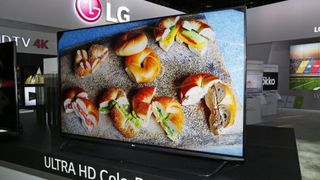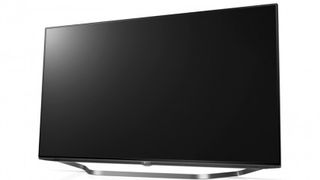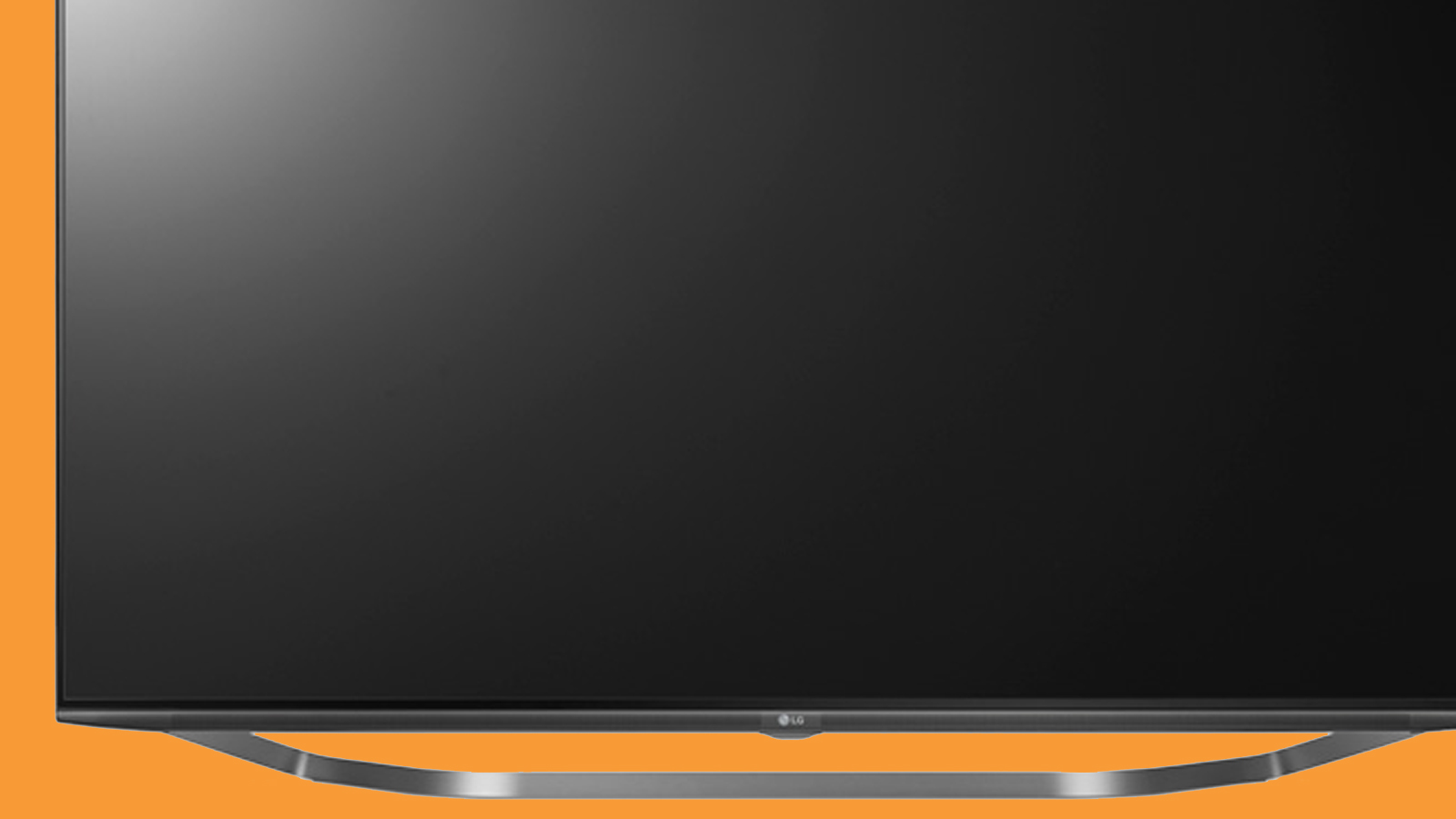Early Verdict
The LG UF9400 isn't perfect. The color is a bit oversaturated and it could come to market at an overwhelmingly expensive price tag.
Pros
- +
Widens color gamut by 30%
- +
Quad-core processor
- +
WebOS 2.0
Cons
- -
VERY Oversaturated
- -
More expensive than 4K
Why you can trust TechRadar
CES 2015 has its fair share of surprises, but the LG UF9400 4K UHD TV powered by Quantum Dot technology, announced two weeks in advance of CES, wasn’t one of them. But everyone knows that a press release doesn’t give the full story and it wasn’t until I saw the panel on the showfloor that I understood just how much of a leap Quantum Dot is for LG.
It took some explaining to get there, but once I finally wrapped my head around terms like nano-crystals, Quatum Dots and Color Prime technology I was able to see a noticeable difference in the color levels compared to a standard 4K Ultra-HD set.
Unlike OLED where every pixel is individually lit, Quantum Dot panels still use traditional LED LCD backlighting. What sets the technology apart, though, is the addition of a layer of film with the eponymous dots. The dots make colors 20-30% more vibrant which, in the future, might make for a very nice TV.
Wait, did you just say ‘might?’
I did. And it was intentional.
This is LG’s first pass at a Quantum Dot IPS panel, which means while other manufacturers (like Samsung and its brand-new SUHD 4K TV) had time to perfect the process, LG’s just getting into the game.

After going hands on with the TV one clear thought kept popping up: this picture is vibrant, but it’s at the point of oversaturation. Harsh, heavy-handed reds took over the majority of the color spectrum, giving some objects on-screen a strange tint. The scene LG had on loop was someone cooking eggs and serving them with a bright-red apple. Both the eggs and the apple looked a little off-putting and while the rest of the scene looked fine, these unnaturally vibrant areas were almost impossible to ignore.
Representatives from LG were very upfront about it, saying that this was something the company’s engineers would be working on over the coming months and that they hoped to have it fixed before the UHD screen hits the market later this year.
Design
The UF9400 is positioned above 4K UHD TVs but not quite up to snuff with OLEDs, and this comes through in both design and function. From front to back the cabinet sits at a few scant millimeters thick, narrowing the gap between LED LCD and OLED screens.
In the “good, better, best” scenario laid out to me by LG, the UF9400 is the better option for consumers that want something above 4K but aren’t quite ready for the financial commitment of OLED.

It comes equipped with a quad-core processor which is great for cord-cutters and runs at a buttery-smooth 240Hz. It only comes in one size, however, 65-inches. But that seems like a good, middle-of-the-road option for the majority of consumers.
One of the big announcements besides Quantum Dot for the South Korean-based company was its partnership with Harman/Kardon to bring their speaker technology to the full line of UHD TVs. The UF9400 sports a pair of 4.2-watt, front-firing drivers and while I didn’t get a chance to try them in the crowded booth, their addition will undeniably please anyone who continually refuse to buy external speakers. (Guys, we need to have a talk about that…)
Upscaling, ultra-luminance and WebOS 2.0
LG’s line of 4K UHD TVs use its proprietary 4K Upscaler technology that interpolates standard HD (or, God forbid, 480p) signal and fills in the gaps in the data. This, in combination with its ultra-luminance tech, made for a relatively sharp quasi-4K image.
But whether or not LG’s Upscaler tech can fool friends and family into thinking HD content is native 4K remains to be seen. You can be sure that will be one of our first tests when we get a unit of our own later this year.
The other major improvement en route to 2015 LG TVs is WebOS 2.0. Bringing with it an improved, 30% faster startup time, WebOS 2.0 will allow users to store eight favorite channels, accessible on the home screen, faster switching between apps, and a new-and-improved content store. But more on that in our WebOS 2.0 hands on, coming soon.
Early verdict
The UF9400 isn’t perfect, and in its current state wouldn’t necessarily be something I’d recommend to someone about to drop thousands of dollars on a 4K TV. But LG owned up to it, realizes that the color is skewed and has plans to fix it before its launch later this year.
Taking the dots out of the equation, the rest of the TV is solid. WebOS 2.0 looks to improve the general user experience and the upscaler tech, if it’s good enough, will mean we don’t have to gripe about a lack of native 4K content. Whether any or all of this pans out however is on LG and the decisions it makes in the next two months.
Nick Pino is Managing Editor, TV and AV for TechRadar's sister site, Tom's Guide. Previously, he was the Senior Editor of Home Entertainment at TechRadar, covering TVs, headphones, speakers, video games, VR and streaming devices. He's also written for GamesRadar+, Official Xbox Magazine, PC Gamer and other outlets over the last decade, and he has a degree in computer science he's not using if anyone wants it.
What is a hands on review?
Hands on reviews' are a journalist's first impressions of a piece of kit based on spending some time with it. It may be just a few moments, or a few hours. The important thing is we have been able to play with it ourselves and can give you some sense of what it's like to use, even if it's only an embryonic view. For more information, see TechRadar's Reviews Guarantee.

